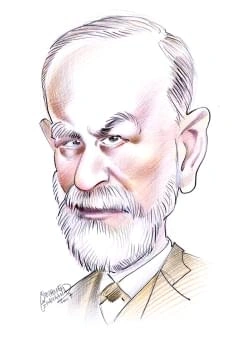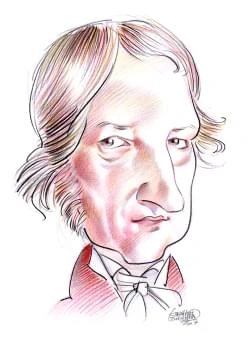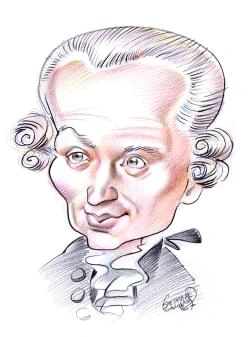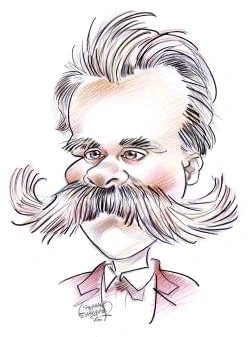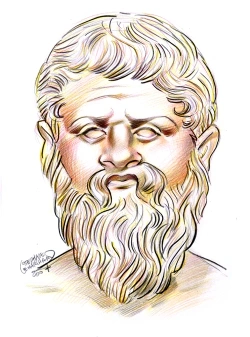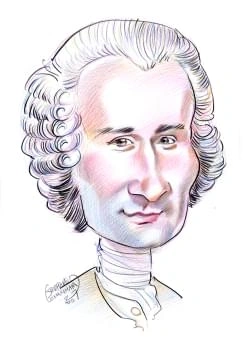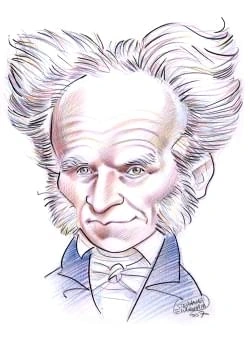541 résultats pour "wats"
-
Whale - biology.
III BEHAVIOR OF WHALES Studies of whales in captivity have taught scientists much about the complex social behavior of whales. Since the late 1980s, advances in the use of satellite trackingsystems have also broadened opportunities for scientists to observe how whales behave in the wild. A Swimming and Diving Whales swim by making powerful up-and-down movements of the tail flukes, which provide thrust. The power comes from body muscles that flex the lower spine upand down in a wavelike motion...
-
Dolphin (aquatic mammal) - biology.
Scientists have observed dolphins displaying three types of caregiving behaviors: standing by, excitement, and supporting. In standing-by behavior, dolphins remain inthe vicinity of an injured or ill companion without offering aid. In excitement behavior, dolphins swim swiftly in circles around an injured dolphin, responding aggressivelytoward threats to the injured animal. For instance, they may bite harpoon lines or charge boats that come too close to the animal. In supporting behavior, one or...
-
Earthquake.
III CAUSES Most earthquakes are caused by the sudden slip along geologic faults. The faults slip because of movement of the Earth’s tectonic plates. This concept is called theelastic rebound theory. The rocky tectonic plates move very slowly, floating on top of a weaker rocky layer. As the plates collide with each other or slide past eachother, pressure builds up within the rocky crust. Earthquakes occur when pressure within the crust increases slowly over hundreds of years and finally exceeds...
-
Dentistry.
Together with dentists, dental hygienists and dental assistants make up the team that provides dental care to patients. Hygienists record patient medical histories, suchas blood pressure and pulse. They clean teeth, apply sealants and fluoride treatments, teach patients sound oral hygiene practices, and often assist with X rays. Manyhygienists receive a two-year associate degree, while others may choose to enroll in a four-year program at a university or in a master’s degree program. There are25...
-
Nebraska - geography.
by natural resource districts to limit the rate of pumping for irrigation. C Climate Nebraska has a typical continental climate with wide seasonal variations in temperature. C1 Temperature Winter temperatures below -20°C (0° F) and summer temperatures in the upper 30°s C (lower 100°s F) are common. The average January temperature varies from about -7° C (about 20° F) in the northeast to about -2° C (about 29° F) in the southwest. The average for July, thehottest month, ranges from about 26° C...
-
Nebraska - USA History.
by natural resource districts to limit the rate of pumping for irrigation. C Climate Nebraska has a typical continental climate with wide seasonal variations in temperature. C1 Temperature Winter temperatures below -20°C (0° F) and summer temperatures in the upper 30°s C (lower 100°s F) are common. The average January temperature varies from about -7° C (about 20° F) in the northeast to about -2° C (about 29° F) in the southwest. The average for July, thehottest month, ranges from about 26° C...
-
Extrasolar Planets - astronomy.
When a planet passes in a front of the star it orbits—an event called a transit—it causes a small dip in the brightness of the star. Measuring the slight change in thebrightness can be used not only to directly detect a planet, but to determine its size and orbit. However, the planet needs to orbit in a plane that lies in a telescope’sline of sight on the star. Despite long odds, Earth-based telescopes have detected and studied a few exoplanets using this method. The first space telescope design...
-
Claude Monet
I
INTRODUCTION
Monet's Gardens at Giverny
From 1890 until his death in 1926, Claude Monet lived and painted in the small village of Giverny, near Paris.
small works, Monet’s quick daubs of fresh colors aptly capture the movement of the water and gaiety of the scene. Despite his father's disapproval, in 1870 Monet married Camille, who had already borne him a son. To escape the Franco-Prussian War (1870-1871), during whichGerman troops threatened Paris, the couple went to London, then to Holland. They returned in 1872 and settled in Argenteuil, a sailing center on the Seine Riveroutside Paris. Monet painted numerous vibrant, light-filled views of...
-
-
Colorado - geography.
Although the rivers of Colorado are navigable only by small boats, they are important as a source of irrigation water for use in Colorado and adjoining states. However,the water level of the rivers fluctuates seasonally and from year to year. The level is generally low in winter and high in spring and summer, during the runoff of meltedsnow from the mountains. Colorado has no large lakes of natural origin, but there are numerous small lakes in the mountains. The largest bodies of water in Colora...
-
Colorado - USA History.
Although the rivers of Colorado are navigable only by small boats, they are important as a source of irrigation water for use in Colorado and adjoining states. However,the water level of the rivers fluctuates seasonally and from year to year. The level is generally low in winter and high in spring and summer, during the runoff of meltedsnow from the mountains. Colorado has no large lakes of natural origin, but there are numerous small lakes in the mountains. The largest bodies of water in Colora...
-
Snake (reptile).
in their heads that conduct sound. They are able to hear low-frequency sounds and to sense vibrations that travel through the ground or water. The majority of snakeshave good eyesight, especially for detecting moving objects, although most burrowing snakes can only distinguish between light and dark. Pit vipers, boas, and pythons have an unusual adaptation for detecting warm-blooded prey and predators. On the heads of these snakes are small pits lined with cellsthat are extremely sensitive to he...
-
Mammal - biology.
On land, mammals live in many different habitats, and at a wide range of altitudes. Many mammals dig burrows as refuges or as places to raise their young, but somehave developed a largely subterranean lifestyle, feeding on small animals or plant roots beneath the soil's surface. These animals, including moles and mole-rats, digthrough the ground either with spadelike front paws or with their teeth, and they detect danger by being highly sensitive to vibrations transmitted through the soil.Most m...
-
Coral - biology.
Soft corals lack a distinct skeleton. Although they live in colonies, the individual polyps are fused into a complex body, usually strengthened by small lumps or spikesknown as sclerites, which are made of protein and calcite. Soft corals come in a variety of shapes, including undulating sheets, upright mushroomlike shapes, andbeautiful shapes that form branches. A number of other octocorals have skeletons made from a hard or horny protein, sometimes strengthened with more brittle calcareous dep...
-
Texas - geography.
D Climate Eastern Texas has a humid subtropical climate, while a semiarid low latitude climate prevails in central areas, and an arid low latitude climate in the extreme west. Alongthe coast the climate is much milder, with fewer extremes in temperatures. Hurricanes sometimes hit the coastal areas of Texas from late July through September, andtornadoes are common in north-central Texas in April and May. D1 Temperature Summers are hot throughout the state, and temperatures exceeding 35°C (95°F)...
-
Texas - USA History.
D Climate Eastern Texas has a humid subtropical climate, while a semiarid low latitude climate prevails in central areas, and an arid low latitude climate in the extreme west. Alongthe coast the climate is much milder, with fewer extremes in temperatures. Hurricanes sometimes hit the coastal areas of Texas from late July through September, andtornadoes are common in north-central Texas in April and May. D1 Temperature Summers are hot throughout the state, and temperatures exceeding 35°C (95°F)...
-
Quantum Theory
I
INTRODUCTION
Quantum Theory, in physics, description of the particles that make up matter and how they interact with each other and with energy.
electron in the same way a particle with momentum would: It bumps the electron and changes the electron’s path. The light is also affected by the collision as though itwere a particle, in that its energy and momentum changes. Momentum is a quantity that can be defined for all particles. For light particles, or photons, momentum depends on the frequency, or color, of the photon, which in turndepends on the photon’s energy. The energy of a photon is equal to a constant number, called Planck’s cons...
-
-
Saudi Arabia - country.
C Natural Resources Some of the world’s largest oil and natural gas fields lie beneath Saudi Arabia and its offshore waters, representing the country’s most economically important naturalresource. In 2007 Saudi Arabia’s oil reserves were estimated at 264 billion barrels. Before the discovery and exploitation of these reserves in the mid-20th century,Saudi Arabia was one of the poorest countries in the world. Its relatively small population subsisted in a harsh environment with little agricultur...
-
Alaska - geography.
depression surrounded by highlands and have the coldest winter and hottest summer temperatures in Alaska. Once the Kuskokwim River passes through theKuskokwim Mountains, it forms the southern edge of a vast lake-studded alluvial plain bounded on the north by the Yukon River. This water-logged lowland is a majorsummer nesting area for birds. Fairbanks is the major city in this region, while Fort Yukon is the major community in the Yukon Flats and Bethel the largest settlementon the Lower Kuskokwi...
-
Alaska - USA History.
depression surrounded by highlands and have the coldest winter and hottest summer temperatures in Alaska. Once the Kuskokwim River passes through theKuskokwim Mountains, it forms the southern edge of a vast lake-studded alluvial plain bounded on the north by the Yukon River. This water-logged lowland is a majorsummer nesting area for birds. Fairbanks is the major city in this region, while Fort Yukon is the major community in the Yukon Flats and Bethel the largest settlementon the Lower Kuskokwi...
-
New York - geography.
The Adirondack province consists of a large highland area occupying 26,000 sq km (10,000 sq mi) in the northeastern quarter of the state. The region is domelike inshape, with the higher elevations toward the east. The western Adirondack province is more a rugged hill region and not truly mountainous. Geologically, this area isrelated to the Laurentian Upland, or Canadian Shield, which lies north of the St. Lawrence River, for it is composed of the same very old igneous rocks, principallygranite...
-
New York - USA History.
The Adirondack province consists of a large highland area occupying 26,000 sq km (10,000 sq mi) in the northeastern quarter of the state. The region is domelike inshape, with the higher elevations toward the east. The western Adirondack province is more a rugged hill region and not truly mountainous. Geologically, this area isrelated to the Laurentian Upland, or Canadian Shield, which lies north of the St. Lawrence River, for it is composed of the same very old igneous rocks, principallygranite...
-
Iraq - country.
The Euphrates begins in Turkey, crosses Syria, and enters Iraq at Abū Kam āl. The flow of the Euphrates into Iraq has been greatly reduced by dams built by Turkeyand Syria. The gradient of the Euphrates above the town of H īt, in west central Iraq, is steep. In the 2,640 km (1,640 mi) from its source in Turkey to H īt, the river fallsfrom 3,000 m (10,000 ft) to a low water elevation of 50 m (170 ft) above sea level, an average drop of 1 m per km (6 ft per mi). In Iraq below H īt the fall is very...
-
Glacier.
covered. In spring the snow cover begins to melt in the lower reaches, exposing the ice surface. As temperatures increase, the melting moves up the glacier. Thesnowline is the highest position the melting reaches during the year. Firn is old granular snow. The firn limit may not exactly coincide with the annual snowline since insome years rapid melting leaves behind firn patches below the snowline. Some glaciers exhibit features called ice streams and icefalls. Ice streams are valley glaciers th...
-
West Virginia - geography.
Forests, mostly of hardwood varieties, cover 79 percent of West Virginia. The principal commercial species are the oak, yellow poplar, maple, birch, beech, black walnut,hickory, and gum. Softwoods include pines and hemlock firs. Flowering trees include the wild crab apple, dogwood, hawthorn, and redbud. Among the many floweringbushes and plants are the rhododendron, which is the state flower, the laurel, blueberry, hepatica, wild geranium, and black-eyed Susan. Insects and disease, mostly introd...
-
-
West Virginia - USA History.
Forests, mostly of hardwood varieties, cover 79 percent of West Virginia. The principal commercial species are the oak, yellow poplar, maple, birch, beech, black walnut,hickory, and gum. Softwoods include pines and hemlock firs. Flowering trees include the wild crab apple, dogwood, hawthorn, and redbud. Among the many floweringbushes and plants are the rhododendron, which is the state flower, the laurel, blueberry, hepatica, wild geranium, and black-eyed Susan. Insects and disease, mostly introd...
-
Alberta - Geography.
C Climate Except for the mountain areas, summers throughout the province are quite warm. Winters are long and extremely cold. In July, average daily temperatures range fromabout 16°C (about 60°F) along the northern boundary to about 21°C (about 70°F) in the south. In the extreme southeastern section of the province, temperatures of43°C (110°F) have been recorded. In January, average daily temperatures range from about -14°C (about 6°F) at Grande Prairie to about -9°C (about 16°F) atCalgary. Tem...
-
Alberta - Canadian History.
C Climate Except for the mountain areas, summers throughout the province are quite warm. Winters are long and extremely cold. In July, average daily temperatures range fromabout 16°C (about 60°F) along the northern boundary to about 21°C (about 70°F) in the south. In the extreme southeastern section of the province, temperatures of43°C (110°F) have been recorded. In January, average daily temperatures range from about -14°C (about 6°F) at Grande Prairie to about -9°C (about 16°F) atCalgary. Tem...
-
Bangladesh - country.
F Environmental Issues Waterborne diseases such as cholera are a serious threat to public health in Bangladesh. Until the 1970s, many of Bangladesh’s people became sick from drinkingpolluted water drawn from surface rivers. Aid agencies such as the United Nations Children’s Fund (UNICEF) built shallow wells throughout the country to help provide asafe source of drinking water to Bangladesh’s poor. In the 1990s, however, it was discovered that many of these wells were contaminated by arsenic, a...
-
Missouri - geography.
Saint Francois Mountains, at the eastern end of the crest of the dome. Only in these mountains have the sedimentary rocks been sufficiently eroded away so that theunderlying igneous rocks are exposed. They form the rounded, knoblike peaks of an old mountain range. The peaks project, in isolation or in clusters, between 230 and300 m (750 and 1,000 ft) above the surrounding sedimentary basins. One of these knobs, Taum Sauk Mountain, reaches 540 m (1,772 ft) above sea level and is thehighest point...
-
Missouri - USA History.
Saint Francois Mountains, at the eastern end of the crest of the dome. Only in these mountains have the sedimentary rocks been sufficiently eroded away so that theunderlying igneous rocks are exposed. They form the rounded, knoblike peaks of an old mountain range. The peaks project, in isolation or in clusters, between 230 and300 m (750 and 1,000 ft) above the surrounding sedimentary basins. One of these knobs, Taum Sauk Mountain, reaches 540 m (1,772 ft) above sea level and is thehighest point...
-
Light
I
INTRODUCTION
Light, form of energy visible to the human eye that is radiated by moving charged particles.
simulates the action of a moving charge upon the electric field. It creates a wave that travels along the rope in a direction that is perpendicular to the initial up anddown movement. Because electromagnetic waves are transverse—that is, the vibration that creates them is perpendicular to the direction in which they travel, they are similar to waveson a rope or waves traveling on the surface of water. Unlike these waves, however, which require a rope or water, light does not need a medium, or su...
-
Cambodia - country.
The population of Cambodia is 14,241,640 (2008 estimate). Population growth per year is estimated at 1.8 percent, one of the highest rates in Asia. The rate of infantmortality is also high. The population density is 81 persons per sq km (209 per sq mi), with the densest concentrations on the heavily cultivated central plain. Themountainous regions of the country, where malaria is widespread, are thinly populated, as are the poorly watered northern provinces. During the late 1970s, under thebruta...
-
-
Human Disease.
disease can be transmitted through food infected with mutated proteins. B Spread of Infectious Disease Some pathogens are spread from one person to another by direct contact. They leave the first person through body openings, mucous membranes, and skin wounds,and they enter the second person through similar channels. For example, the viruses that cause respiratory diseases such as influenza and the common cold are spreadin moisture droplets when an infected person coughs or sneezes. A hand that...
-
Archaeology.
Prehistoric archaeology is practiced by archaeologists known as prehistorians and deals with ancient cultures that did not have writing of any kind. Prehistory, a term coined by 19th-century French scholars, covers past human life from its origins up to the advent of written records. History—that is, the human past documented insome form of writing—began 5000 years ago in parts of southwestern Asia and as recently as the late 19th century AD in central Africa and parts of the Americas. Becaus...
-
Nile - Geography.
The Nile is also a source of hydroelectric power ( see Waterpower), although the river’s potential as a source of electricity has yet to be fully exploited. Dams to provide hydroelectricity (and control flooding) have been constructed along the Nile in Egypt, Sudan, and Uganda. Additional hydroelectric projects are planned. IV HISTORY OF THE NILE A Ancient Egypt and the Nile The first great African civilization developed in the northern Nile Valley in Egypt in about 3300 BC. Settlements alon...
-
Technology.
loose soil in this region, known as the Fertile Crescent, was easily scratched for planting, and an abundance of trees was available for firewood. By 5000 BC, farming communities were established in areas known today as Syria, Turkey, Lebanon, Israel, Jordan, Greece, and the islands of Crete and Cyprus. Agricultural societies in these places constructed stone buildings, used the sickle to harvest grain, developed a primitive plowstick, and advanced their skills inmetalworking. Trade in flint al...
-
Comet - astronomy.
may exceed the planet Jupiter in size, however. Observations from telescopes on Earth and in space indicate that most of the gases in the coma and tail of a comet are fragmentary molecules, or radicals, of the mostcommon elements in space: hydrogen, carbon, nitrogen, and oxygen. The radicals, for example, of CH, NH, and OH may be broken away from the stable molecules CH 4 (methane), NH 3 (ammonia), and H 2O (water), which may exist as ices or more complex, very cold compounds in the nucleus. Al...
-
Federal Republic of Germany - country.
B Rivers and Lakes Rivers have played a major role in Germany’s economic development. The Rhine River flows in a northwesterly direction from Switzerland through much of westernGermany and The Netherlands into the North Sea. It is a major European waterway and a pillar of commerce and trade. Its primary German tributaries include theMain, Mosel, Neckar, and Ruhr rivers. The Oder (Odra) River, along the border between Poland and Germany, runs northward and empties into the Baltic; it provides an...
-
Brazil - country.
occasional droughts. Brazil contains a wealth of mineral and plant resources that have not yet been fully explored. It possesses some of the world’s largest deposits of iron ore and containsrich deposits of many other minerals, including gold and copper. Brazil’s fossil fuel resources are modest, but this limitation is offset by the considerable hydroelectricpotential of the nation’s many rivers. Although Brazil is an important producer of tropical crops, areas of highly fertile land are limited...
-
Animals.
All animals must breathe oxygen to stay alive. They must breathe out a waste gas called carbon dioxide. Some animals breathe through lungs. Lungs take oxygen out of air. Cattle, dogs, cats, whales, people,and other mammals breathe through lungs. Birds and reptiles also breathe air through lungs. Lungs cannot take air from water. Seals, whales, dolphins, and other mammals that live in waterbreathe through lungs. They can stay underwater a long time because they can hold their breath for along tim...
-
- Chiens de chasse Irish-Water-Spaniel.
-
Bangkok - geography.
the decline of the canal system that once so distinguished the city, Bangkok's famous floating market has had to move from the city to the western suburbs. Themarket features vendors selling their wares from boats in the early-morning hours. Since the 1960s, high-rise buildings have been erected all over the city. Typical housing in the core of the city now consists of apartments on the second through fourthfloors of a shophouse; the building’s only recreational space is the rooftop. In the subu...
-
From Bulfinch's Mythology: Prometheus and Pandora - anthology.
The world being thus furnished with inhabitants, the first age was an age of innocence and happiness, called the Golden Age. Truth and right prevailed, though not enforced by law, nor was there any magistrate to threaten or punish. The forest had not yet been robbed of its trees to furnish timbers for vessels, nor had men builtfortifications round their towns. There were no such things as swords, spears, or helmets. The earth brought forth all things necessary for man, without his labour inplo...
-
Rhinoceros - biology.
Male and female rhinos have a similar physical appearance, although male rhinos are usually larger than females, with the size difference varying between species. Inthe wild, some rhinos probably live into their late 40s, and they have survived into their 30s in captivity. IV TYPES OF RHINOCEROSES Until recently, mammalogists divided the rhinoceros family into three subfamilies, each with different characteristics. Scientists now believe that living rhinos belong to asingle subfamily, although...
-
Anatomy.
The body defends itself against foreign proteins and infectious microorganisms by means of a complex dual system that depends on recognizing a portion of the surfacepattern of the invader. The two parts of the system are termed cellular immunity, in which lymphocytes are the effective agent, and humoral immunity, based on theaction of antibody molecules. When particular lymphocytes recognize a foreign molecular pattern (termed an antigen), they release antibodies in great numbers; other lymphocy...
-
Optics
I
INTRODUCTION
Mirage
Mirages appear because differences in air temperature cause light rays from an object to take different paths to a viewer's
eye.
Refraction of Light by DiamondsThe brilliance of diamonds is due to their high refractive index, a measure of how strongly a transparent material bendslight rays. The skill of the gem-cutter lies in angling the facets of the stone so that each light ray entering it is reflectedmany times before it emerges again.Spencer Grant/Photo Researchers, Inc. The amount of light reflected depends on the ratio of the refractive indexes for the two media. The plane of incidence contains the incident ray and...
-
Dominican Republic - country.
Manatees and sea turtles also live in Dominican waters. Common birds include blue herons, glossy ibis, flamingos, and brown pelicans. E Environmental Issues Urban dwellers of the Dominican Republic enjoy good access to safe water, but rural communities do not. While current water use is low relative to available resources,water shortages do occur. Although deforestation was once a serious problem in the Dominican Republic, by the beginning of the 21st century, the annual rate of deforestation h...
-
Automobile.
Electric motors have been used to power automobiles since the late 1800s. Electric power supplied by batteries runs the motor, which rotates a driveshaft, the shaftthat transmits engine power to the axles. Commercial electric car models for specialized purposes were available in the 1980s. General Motors Corporation introduced amass-production all-electric car in the mid-1990s. Automobiles that combine two or more types of engines are called hybrids. A typical hybrid is an electric motor with ba...
-
-
Newfoundland and Labrador - Geography.
Precipitation averages about 1,120 mm (about 44 in) yearly in Newfoundland. In Labrador precipitation varies from about 1,020 mm (about 40 in) in the southeast toabout 510 mm (about 20 in) in the extreme north. Heavy winter snowfalls are common, especially in Newfoundland. D Plant Life About one-third of Newfoundland is forested, and most of the rest of the island is made up of barren areas of reindeer moss and lichens. The forests consist almostentirely of conifers. The most important species...
-
Newfoundland and Labrador - Canadian History.
Precipitation averages about 1,120 mm (about 44 in) yearly in Newfoundland. In Labrador precipitation varies from about 1,020 mm (about 40 in) in the southeast toabout 510 mm (about 20 in) in the extreme north. Heavy winter snowfalls are common, especially in Newfoundland. D Plant Life About one-third of Newfoundland is forested, and most of the rest of the island is made up of barren areas of reindeer moss and lichens. The forests consist almostentirely of conifers. The most important species...
}})
